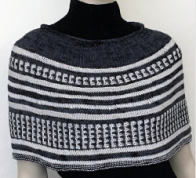This unique and well-written book on history and techniques of Lithuanian Knitting comes from a very deeply rooted interest in the author’s hearts. Donna Druchunas and June Hall are taking us on a tour of one of the Baltic countries that is rich in textile traditions and many other crafts. Their main focus is on knitting tradition, but the book is offering so much more than 28 patterns for gloves, mittens, socks and wrist warmers.
It is a personal story. Both Donna and June have family members born in Lithuania and they grew up knowing about existing of this faraway land through food, stories, pictures, and knitting. Each of the authors share a part of them related to this culture and through incredible stories we learn why they have this drive to study, research, knit, design, and bring it to us in the most fascinated book that they worked together for almost 8 years.
And now this book is in manuscript form ready to be published for all of us to read and enjoy. It is beautifully written and is full of inspiration not only for a knitter, but any person who reads it.
So, where is Lithuania? It is easy for me to know since I was born in Russia and my family is from a neighboring country Belarus. For many Americans though it might be a stretch to remember where it is.
The map is from the internet search.
Wikipedia quote: “One of the three Baltic states, it is situated along the southeastern shore of the Baltic Sea, to the east of Sweden and Denmark. It is bordered by Latvia to the north, Belarus to the east and south, Poland to the south, and Kaliningrad Oblast (a Russian exclave) to the southwest. Lithuania has an estimated population of 3 million as of 2013, and its capital and largest city is Vilnius. Lithuanians are a Baltic people. The official language, Lithuanian, and Latvian are the only two living languages in the Baltic branch of the Indo-European language family.”
I love how Donna describes this country: “Lithuania is a hub of European textile production and a haven for fiber artists. Visitors to the capital city of Vilnius find the narrow cobblestone streets flanked by hidden yarn and folk-art shops. Tourist markets overflow with hand-knitted mittens, socks, wrist warmers and caps. Museums house rich textile exhibits and collections, and traditional handcrafts are demonstrated at street festivals and open-air museums during summer. As soon as autumn’s cool breezes kick up, the streets become a veritable knitwear fashion show.”
In this book Donna and June talk about language, culture, people they have met on their multiple trips to Lithuania, about people behind many gorgeous and colorful creations, farming, produce, cities and villages, history, and finally their own feelings of belonging. Authors take us from historical pieces found in museums to replicas of them in modern times.
As I mentioned, there are 28 patterns for you to experience traditional knitting of Lithuania.
Here is a little peek at some designs.
Bead work.
Lace
Entrelac and fair Isle
Slip Stitch (So happy to see these!!)
I love to read about history of knitting and culture. Unfortunately we do not have much written about the early years and origins of knitting and crochet since that kind of tradition was handed down from generation to generation by physical presence and loving teaching.
That’s why it is so important to support work of diligent and passionate writers and researchers like Donna Druchinus and June Hall. Their work is not over. They are planning to continue their search and want to teach many knitters to continue this tradition. This is just a beginning.
We are almost at the end of the virtual blog tour for this book. You can go to Donna’s website to see all the posts and learn piece -by-piece all about the project called Support Lithuanian Knitting that will help to bring this book to fruition.
When you go to that link, you will see that the goal Donna and June set is almost met, but there are still possibilities and opportunities for you to participate in this important and wonderful project.
Here is Donna herself telling you all about it.

Speak Your Mind